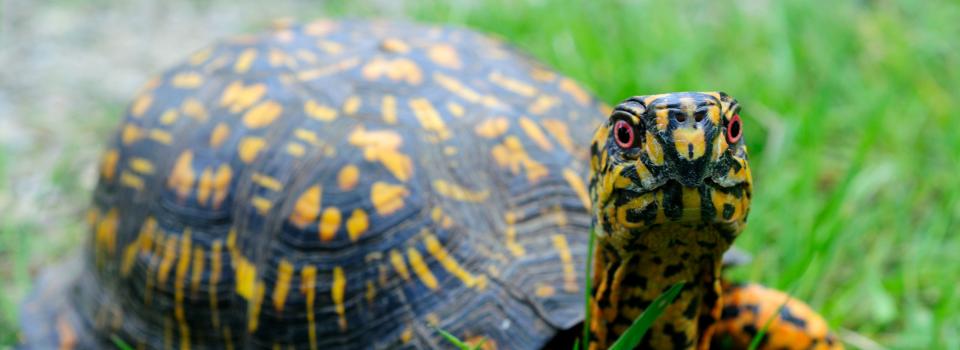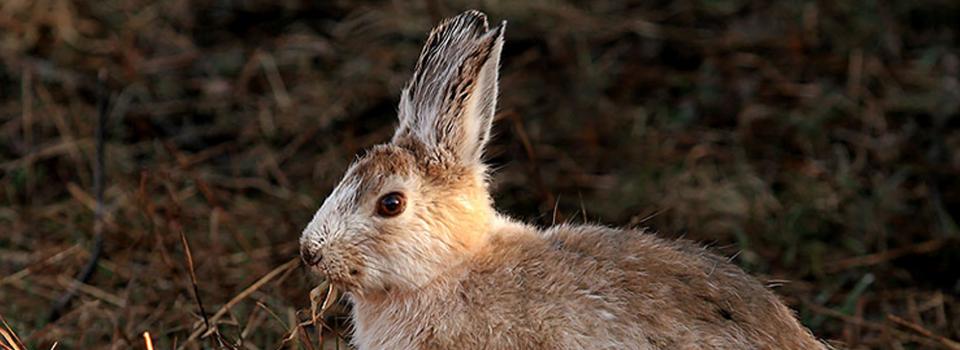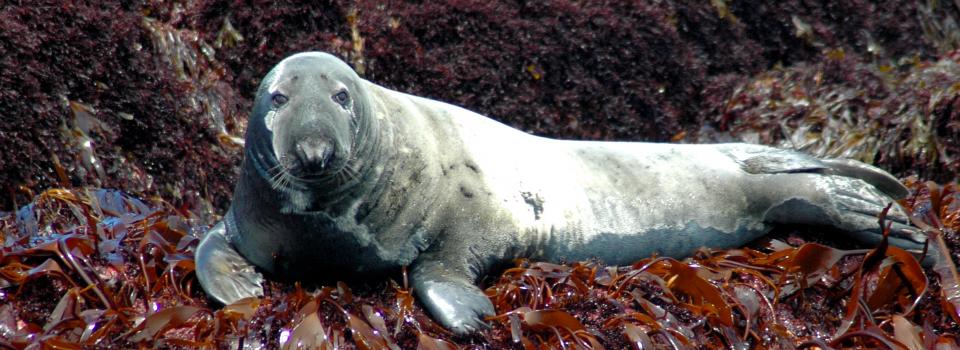
Hermit Thrush
Photo by: Robert Royse

Box Turtle
Photo by: Jonathan Mays

Snowshoe Hare
Photo by: Mike Hodgson

Timber Rattlesnake
Photo by: Kelly Wiley

Gray Seal
Photo by: Jonathan Mays








The Regional Conservation Needs (RCN) Grants Program funded project, Developing a coordinated research approach for hellbender conservation in the northeast, has been completed. The final report as well as eDNA and egg rearing protocol are available on the RCN project page.
The eastern hellbender (Cryptobranchus alleganiensis alleganiensis) is a large, fully aquatic salamander that prefers clear, fast-flowing, well-oxygenated streams and rivers. They are found throughout the Appalachian region from southern New York to Georgia, and in Kentucky, Indiana, Illinois and Missouri. The hellbender is declining in many parts of its range and has been identified as a Species of Greatest Conservation Need. The species is broadly distributed and very cryptic, making it difficult to thoroughly map its distribution using traditional approaches that rely on rock-turning to find hellbenders.
Environmental DNA (eDNA) surveys are a relatively new approach to determining if aquatic species are present at a location. The hellbender is well suited for eDNA monitoring because it is rare, secretive and likely sensitive to disturbance from rock-turning surveys. As aquatic species, hellbenders exude many sources of DNA into their environment including skin, feces, blood, spermatozoa and eggs.
Like many rare species with distribution among several states, their conservation is improved when states can share knowledge and resources and work together through efficient state partnerships. This study sought to fill major data gaps in hellbender distribution throughout the northeast, and develop standardized protocols for hellbender research and monitoring and a communication framework for hellbender researchers and population managers across the region.
This project provided broad-scale knowledge about the hellbender’s distribution and generated measurable benefits for public education and wildlife conservation by engaging a large group of citizen scientists in eDNA collection. The resulting archive of frozen eDNA samples represents a ‘snapshot’ of entire biological communities at the time of sample collection, which could serve as a valuable resource for future inventory and monitoring of native fauna, introduced species, and aquatic pathogens. Through these collective efforts and the support of the Northeast Association of Fish and Wildlife Agencies, this project established an effective framework for region-wide hellbender conservation that has resulted in a better understanding of the species’ distribution, public engagement in conservation efforts, and tangible resources to benefit wildlife conservation in the northeastern U.S.

© 2020 A Wildlife Management Institute Project